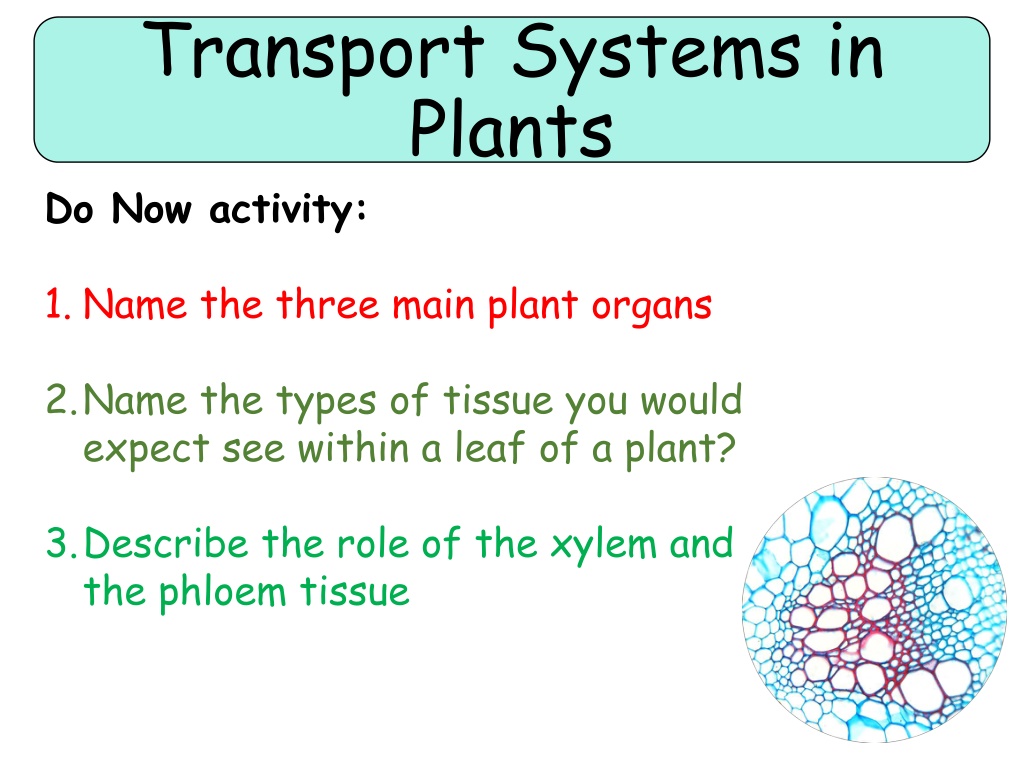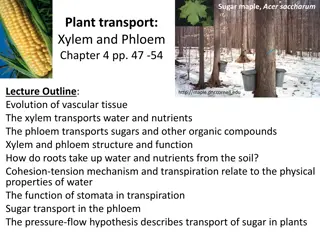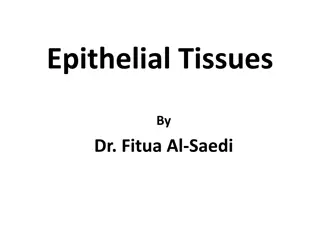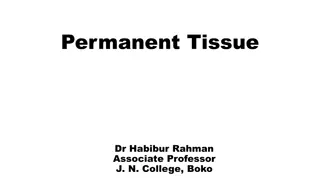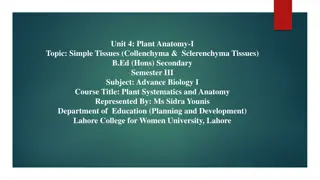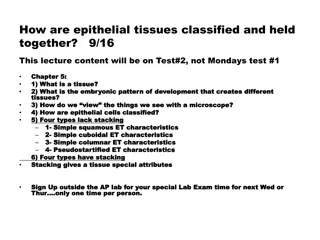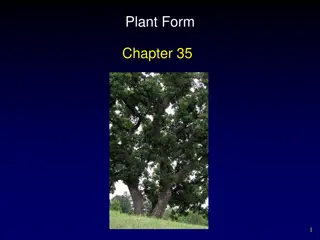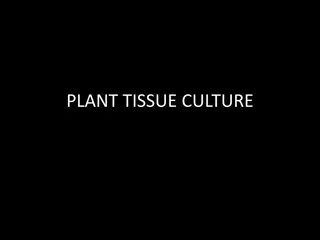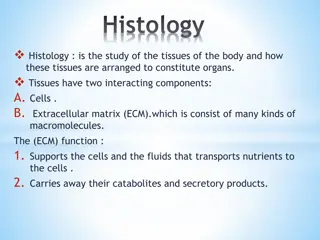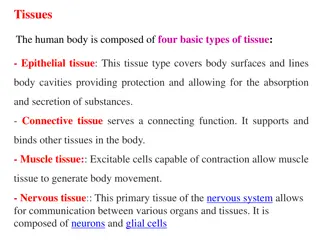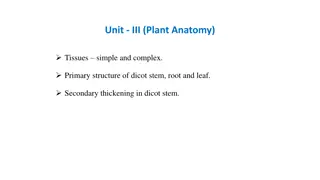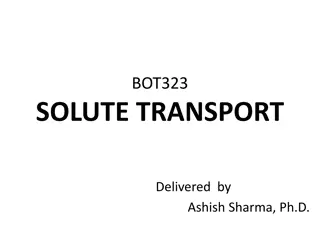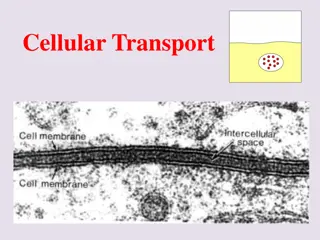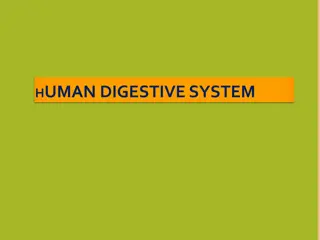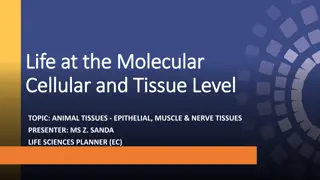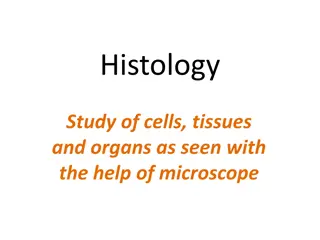Understanding Plant Transport Systems: Organs, Tissues, and Functions
Explore the key components of plant transport systems including organs, tissues, and the roles of xylem and phloem in transporting water, sugars, and minerals essential for plant life. Engage in activities, assessments, and a video to deepen your understanding.
Download Presentation

Please find below an Image/Link to download the presentation.
The content on the website is provided AS IS for your information and personal use only. It may not be sold, licensed, or shared on other websites without obtaining consent from the author. Download presentation by click this link. If you encounter any issues during the download, it is possible that the publisher has removed the file from their server.
E N D
Presentation Transcript
Transport Systems in Plants Do Now activity: 1. Name the three main plant organs 2.Name the types of tissue you would expect see within a leaf of a plant? 3.Describe the role of the xylem and the phloem tissue
Progress indicators GOOD PROGRESS: - Identify the substances transported in plants - Describe the function of the xylem and phloem in relation to the substances they carry OUTSTANDING PROGRESS: - Explain why transport in plants is essential to life by relating each substance to its job within the plant
Xylem and phloem vessels are similar in that they both transport materials around the plant. But they have many differences. Transports water & sugars (food) Think > Pair > Share Look at the diagram to the right, can you identify any similarities and differences between the xylem and phloem vessel? Cheat sheet available! Transports water & mineral ions Xylem vessel Phloem vessel
Task: Copy and complete the following sentences: water Xylem vessels are needed to transport _____ and _______ from the roots to the ______. minerals shoots sugars Phloem vessels are needed to transport ______ from the ______ to the rest of the plant. leaves Keywords: sugar water minerals leaves
https://www.youtube.com/watch?v=QXdujo4PZ7c Task: Watch the video and answer the following questions: 1. How does water move up through the xylem vessels? 2. How do sugars move around the plant in the phloem vessels? 3. Glucose is made during which process? 4. What does glucose change into before it is transported in the phloem? 5. What are the names of the two types of cells needed to make the phloem tissue?
Self-assessment: 1. Water moves up through the xylem due to the transpiration pull of the transpiration stream 2. The process by which sugars move through a plant is called translocation 3. Glucose in the leaves during photosynthesis 4. Glucose is firstly changed into sucrose before it enters the phloem 5. Sieve tube cells and companion cells are the two cells that work together within the phloem tissue
Task: 1. Write the following headings into your book: Xylem Phloem 2. Sort these statements into the correct columns: Transports sugars, e.g. sucrose Moves substances in one direction (from the roots to the leaves) Is made up of living cells Moves substances from the leaves to other parts of the plant Transports minerals & water Is made of dead cells Ask for a cheat sheet if you are stuck! Extra challenge: Complete a labelled diagram of a xylem and a phloem tissue
Xylem Phloem Moves substances in one direction (from the roots to the leaves) Transports sugars, e.g. sucrose Is made up of living cells Moves substances from the leaves to other parts of the plant Is made of dead cells Transports minerals & water
Why is transport so important? It to a plants survival that dissolved sugars, water and mineral ions are moved around the plant. Discuss in pairs what you think the importance of the following substances are to the plant: a) Sugars ~ Cells need sugars for respiration as well for providing materials for growth Mineral ions are needed for the production of proteins and other molecules in the cell b) Mineral ions ~ c) Water ~ Water is needed for photosynthesis, it is also needed to ensure that the plant can hold itself upright
Exam-style question: 1. Plants transport many substances between their leaves and roots. Describe how ions, water and sugar are obtained and transported through plants (6 marks)
Self-assessment: 1. Points that could be included (must ensure at least one point is made for each substance): Ions: are taken up by diffusion or active transport, from an area of high to low conc. (diffusion) or an area of low to high conc. (active transport), ions travel up in the xylem from the roots to the leaves (in one direction only) Water: is taken up by osmosis from the soil by the roots, from an area of low to high concentration, water travels in the xylem from the roots to the leaves, water is pulled up through the plant by the transpiration stream Sugar: this substance is made in the leaves during photosynthesis, sugar travels in the phloem, it is moved to other parts of the plant to be used in respiration or to be stored in storage organs. (6 marks)
Plenary Summarise what you have learnt today in 5 sentences, try and use the key words below. Keywords: Xylem, phloem, mineral ions, transpiration, translocation, glucose, sucrose, water, respiration, photosynthesis, sieve tube cells, companion cells
Cheat Sheet! Cheat Sheet! Phloem Moving food Phloem Moving food The phloem tissue transports sugars made from the leaves to the rest of the plant. Food is also transported to storage organs. The phloem tissue transports sugars made from the leaves to the rest of the plant. Food is also transported to storage organs. Phloem is a living tissue, phloem cells are alive. The movement of dissolved sugars from the leaves to the rest of the plant is called translocation. Phloem is a living tissue, phloem cells are alive. The movement of dissolved sugars from the leaves to the rest of the plant is called translocation. Xylem Moving water and mineral ions Xylem Moving water and mineral ions The xylem tissue carries water and mineral ions from the soil up to the stem and the leaves. The xylem tissue carries water and mineral ions from the soil up to the stem and the leaves. The mineral ions and water only travels in one direction. The mineral ions and water only travels in one direction. Xylem cells are dead. Xylem cells are dead.
5. What are the names of the two types of cells 5. What are the names of the two types of cells 2. How do sugars move around the plant in the 2. How do sugars move around the plant in the 1. How does water move up through the xylem 1. How does water move up through the xylem 4. What does glucose change into before it is 4. What does glucose change into before it is 3. Glucose is made during which process? 3. Glucose is made during which process? needed to make the phloem tissue? needed to make the phloem tissue? transported in the phloem? transported in the phloem? phloem vessels? phloem vessels? vessels? vessels?
